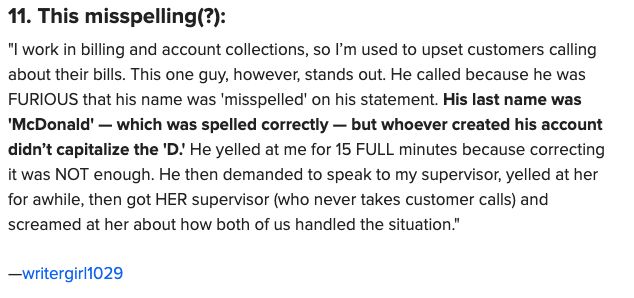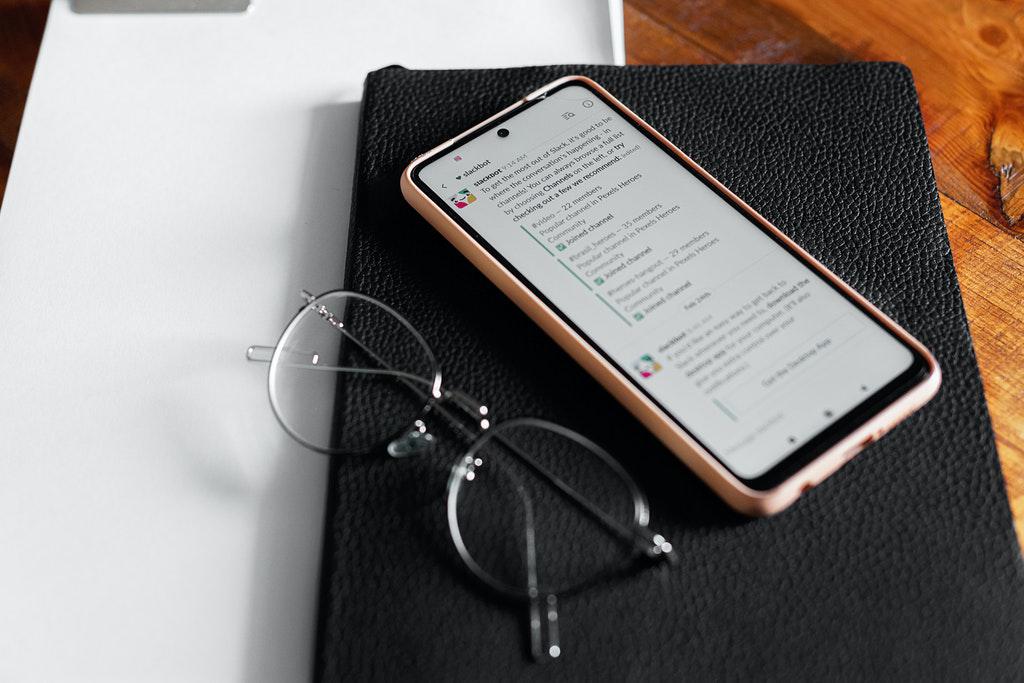Regardless of the industry, anyone working with clients will eventually deal with rude or mean customers. These customers can be very tricky to handle. But if you deal with them properly, it can make the difference between a satisfied customer and a lost customer.
So what are the best ways to deal with rude customers? And why are customers rude to begin with?
Why Are Your Customers So Rude? Looking for Reasons
When dealing with rude customers, the first thing you need to know is why they’re being rude. These are the three most common reasons why a customer may be rude to you…
1. Bad customer service
The service your client receives becomes the service they expect. A single bad experience can put a customer on edge for a long time. If they don’t think they’re getting the customer service they’re entitled to, they may get upset.
So your customer service reps need to know how to consistently provide good service.
While your customer service reps may get tired, a rehearsed voice can sound antagonistic to a customer. Even if your team members are asking the right questions, the wrong tone can put a client off.
2. Lack of acknowledgment
Your clients need to feel like they’re acknowledged when they reach a customer service employee. Most clients expect premium service, due to the money they have invested in your business. However, the more clients your customer service team has to attend to per day, the harder it gets to make each one feel special.
Your customer service team knows some issues are far more common than others. However, each experience is unique to each customer, and it may even be memorable!
If they feel like they’re “just another number” or “just another call,” your customers may act up, in order to demand the recognition they expect.
3. External factors
Sometimes, even when your customer service reps do everything right, the customer will insist on being rude. They may have had a bad day. They may be tired. Or they may simply be unpleasant people!
Right from the start, these clients usually have a rude tone and demand unreasonable things. They may even remain rude, despite all of your team’s best efforts.
Despite the reason, how can you deal with angry customers?
How to Deal With Rude Customers: 7 Tactics
Rude customers are inevitable. That’s why knowing how to deal with them is vital for any business. Here are a few techniques that can help you and your team deal with rude customers…
1. Be empathetic.
The simplest way to deal with a rude customer involves utilizing empathy. If you know why they’re being rude, it’s the best way to disarm the situation. It can tell you what they expect from you and can guide you to a solution.
How to do it:
Start by analyzing the situation from the customer’s perspective. Why are they upset? How would you feel if this scenario was happening to you? Use the answers you develop to your advantage. When hiring a customer service rep, include questions to find out how empathic they are.
Train your team to regularly use empathy before solving any issue. Once they’ve identified the issue, encourage them to establish rapport with the customer by letting them know they would also be frustrated if the issue was happening to them. For example, if a client complains about the quality of their morning coffee, your employee can say something like, “I sure wouldn’t like to start my day with a bad cup of coffee!” After that, they can start trying to solve the issue.
This tactic helps the client realize they’re speaking to someone that understands them and can solve their issue. If they can solve their issue, there’s no point in being rude!
2. Remain calm and stoic.
You want to know how to deal with angry customers? You need to remain so calm that you’re almost expressionless. Calmness can be hard for you and your team to maintain because the first thing we usually do when we feel attacked is fight back. However, escalating the issue is the last thing you want to do.
How to do it:
The first thing you need to remember is that you shouldn’t take it personally. Most of the time, the client is lashing out at the company. They don’t even realize that the customer service rep isn’t the one who caused the issue. To them, there’s no difference between the rep and the rest of the company.
So what do you say to a rude customer? Sometimes, you say nothing. One great way to deal with a ranting customer is to just let them say their piece. Sooner or later, they’ll run out of things to say. When using this tactic, you should remain calm and quiet until they tire themselves out. Don’t interrupt them for any reason. Just listen.
Once they’ve said their piece, try to excuse yourself and say you’re going to start trying to solve their issue. This tactic works best when you’re dealing with angry customers over the phone. You can just say something like, “I fully understand your issue. Let me just talk to someone and make sure this doesn’t happen again. I’ll be right back with you.” Then put them on hold. This action forces a rude client to reflect on the way they’re reacting. Once you come back with a solution, you’ll usually find that they’ll be calm, or even apologetic.
However, it’s important to mention that your safety and the safety of your coworkers is your top priority. So make sure you know the difference between a rude customer and a dangerous one. A rude customer can be dealt with by you and your team. But a dangerous customer shouldn’t even be in the building.
3. Find the issue.
Sometimes, a rude customer can have a very valid point. Although the way they address the issue may be inappropriate, it’s important to identify when their complaint is valid (and when it isn’t).
How to do it:
Make sure you look beyond what they’re saying. Remember that they don’t necessarily know the technical slang or even the cause of the issue. To them, it may be more important to let you know how they feel than to find out what’s causing the problem.
Make sure you get to the root of the cause. Take advantage of their willingness to share and ask them questions about their experience. Once you’re sure you know the reason for their discomfort, let them know. Explain the issue. Articulate why it happened. Then immediately tell them what you’ll do to make it right.
If you can’t find a way to solve the issue, ask the client what they expect from you. You could simply ask, “How can we make this up to you?” Or, “How can we make this right?” These questions can deescalate the situation by forcing the customer to focus on the solution, instead of the problem.
4. Offer a genuine apology.
A rude customer is almost always expecting an apology. However, an apology (especially one that sounds genuine) can be challenging when you feel your company has done nothing wrong.
Even worse, apologizing for something your company didn’t cause can quickly be interpreted as an admission of guilt.
So how can you nail an apology?
How to do it:
When apologizing, it’s important to remember the customer’s feelings above all. Your apology should focus on the fact that the customer had a bad experience, instead of whether their anger towards your company is valid.
Use empathy, and apologize that they had a bad experience, instead of apologizing for causing that experience.
5. Pay attention to your tone.
Remember, even a neutral tone can be interpreted as antagonistic. So maintaining a good tone while dealing with a rude customer can be particularly challenging. It’s easy to fall into an upset or even sarcastic tone, especially when the customer is being unfair.
So your team needs to know how to employ (and even fake) a nice tone as needed.
How to do it:
When dealing with a rude customer, focus on your tone. Breathe and speak slowly, even a bit slower than usual. Don’t yield to the temptation of raising your voice to be heard. If the client interrupts you, let them speak. If they keep interrupting you, politely ask if you can reply to what they said.
Remember, the way we say things is just as important as what we say. If you’re calm, cool, and collected, the customer will find it increasingly harder to keep being rude.
6. Recover and analyze.
An experience with a rude customer can be quite draining. And after a rep deals with an angry customer, they may be expected to immediately do it all over again. Without any time to breathe and recover, it’s easy to get drained and overworked.
How to do it:
Whenever possible, take a break after dealing with a nasty customer. And if someone from your team has just dealt with a difficult customer, encourage them to get some fresh air.
Again, ask yourself: Why are these customers so rude? Do they have different reasons, or are they symptoms of a pain point? What can you do to solve that issue, so it doesn’t happen in the future?
Make sure you learn as much as possible from rude customers. Then fully recover before dealing with the next one.
7. Get your best customer service reps to handle difficult clients.
Dealing with rude customers can be quite daunting, especially for new employees. It’s just not easy to deal with someone being rude. However, a company should always strive to provide the best service possible. Your most experienced customer service reps will have an easier time successfully dealing with rude customers.
How to do it:
Find out which service reps are best at dealing with horrible customers. They must be able to both provide solutions and have the highest tolerance for nasty customers.
Make sure to pair them with inexperienced employees. Then they can learn how to handle rude customers. They can also get insight into the type of customers they’ll be dealing with and the customer service skills they’re expected to develop.
Finally, remember that dealing with rude customers is very hard to do, so find ways to reward their experience and encourage their behavior.
Also, if you are looking for a great website or great self service customer help center, feel free to get in touch with BRIX Agency, a great web design agency out there. If you want to compare different agencies, head over to Sortlist, an agency marketplace.
3 Horrible Customer Stories to Learn From
Looking to learn from experience? Here are three terrible customer stories, as well as the lessons you can learn from them…
1. Uneducated customer

Source: boredpanda.com
Although comical, this example perfectly represents a misinformed customer. Since the customer doesn’t even know what she just purchased, she doesn’t understand what she should be expecting to get.
Learn from it:
Always make sure you find out how much a client knows about an issue. The last thing you want is to find out that the customer doesn’t know what you’re talking about after it’s already too late.
Educate your customers by briefly explaining what you’re doing. Then invite them to ask questions if the information you provide isn’t clear to them or they want to know more.
2. “Incorrect” farewell

Source: reddit.com
This simple, one-sentence story is a classic example of a customer feeling like they’re not getting the respect they deserve. The younger the person is, the more likely it is for them to reply with “no problem” to someone thanking them.
“No problem” is becoming an increasingly popular reply because of its humble nature. It removes the importance of the action. The replier is almost saying that a “thank you” isn’t necessary because the action wasn’t difficult to to perform.
However, the proper way to reply to a “thank you” is with “you’re welcome.” To some, it can seem rude to get a reply that’s not the standard, polite response.
Learn from it:
Always address your customers the way they expect you to—not the way you’re used to. Take their age, background, and the way they talk to you into account. Then let that assessment inform your tone and word choice. Find ways to avoid miscommunication and address it as soon as it happens.
3. Entitled customer

Source: Buzzfeed.com
This person is the definition of a horrible customer. She clearly isn’t looking for a solution. She’s looking for a fight. After going through three people to correct a small mistake that would’ve been easy to fix, she wasn’t happy.
Learn from it:
Sometimes, people are rude for the sake of being rude, and there’s nothing you can do about it. They’ll keep being rude, even when you’ve solved the issue and apologized for the inconvenience.
The best thing to do with these customers is to just let them vent, acknowledge them, and move on as soon as the interaction is over.
Conclusion
Rude customers are unavoidable. It’s only a matter of time until you deal with one. So the next time you have a customer that’s being rude, just remember: You can’t control how they behave, but you can control how you react!
React calmly, and don’t yield to the temptation to treat them the same way. If you do, it will only speak to the quality of your company—and you as a person!







 Instagram
Instagram